From the Wildebeest Migration to the Big 5 and Tropical Beaches
In every of its circuits Tanzania Safari display the wonders that are wondrously incredible. Such a diverse country with unique offerings is not found anywhere in the world.
Tanzania is a big country and the main safari destinations can be split into the north (The Serengeti and Ngorongoro Crater) or the south (The Selous and Ruaha). Most tourists flock to the north as it is comprised of the famed highlights of Tanzania – and rightly so as the wildlife and game viewing is phenomenal. However, the fame of the north can often overshadow the south, which in our view is one of East Africa’s best kept secrets. West Tanzania is the utmost luxury safari option. It is extremely expensive to get to and hardly any tourists do as a result. As a rough guide – when 70% of travellers head to the north, 25% go to the south, and only 5% or less venture to the West.
Tanzania Safaris
From the Wildebeest Migration to the Big 5 and Tropical Beaches
Safari happens almost everywhere you look in Tanzania. It’s been a way of life in East Africa’s second-largest country for decades. Few destinations in Africa can rival Tanzania’s diversity of wildlife and landscapes. From the classic savannah destinations of the Serengeti, Tarangire and Ngorongoro Crater to the beaches and coral reefs of Zanzibar, a Tanzania safari delivers one massive experience after another. And that’s before you discover the off-the-beaten-path gems like chimpanzee trekking in the untouched rainforests of Mahale and Rubondo, or crowd-free game viewing among the beautifully wild and unique landscapes of Nyerere and Ruaha.
From incredible year-round game viewing to the Wildebeest Migration and tropical beach finales, here are some of our best reasons to go on a Tanzania safari:
1. Witness the Great Wildebeest Migration

Hardly any other destination on Earth can offer a wildlife encounter to match the annual Wildebeest Migration. Forming the centrepiece of most inaugural Tanzania safari itineraries, the Migration is a mind-blowing display of nature at her most extraordinary. About 2 million wildebeest, zebra and antelope run the gauntlet of predators as they migrate around the Serengeti-Mara ecosystem in search of fresh grazing. This awe-inspiring event is one of the last mass terrestrial animal movements left on the planet – the herds are so big they can be observed from space!
- The Serengeti National Park – Tanzania’s flagship conservation area – hosts the bulk of the Migration.
- Mobile camps move regularly to stay as close to the herds as possible.
- Some accommodations offer easy access to river crossing points.
Note: availability of well-located safari camps between June and October (river crossing season) is limited. If you want front-row seats to the dramatic river crossings, you should book your Tanzania safari at least a year in advance. Or opt to go when the herds give birth and graze their way across the plains, which is just as impressive to see but easier to guarantee – plus the tourist crowds are fewer. Chat with one of our Africa Safari Experts to plan your trip to coincide with the movements of the herds.
2. See the Big 5 in an Ancient Volcano

The Ngorongoro Crater was formed around 2.5 million years ago when a giant volcano exploded and collapsed on itself. Now an enclosed ecosystem and World Heritage Site, the Crater is the best place in East Africa to see the Big 5. Measuring in at around 600 metres (1 970 feet) deep, the Crater’s floor covers about 260 square kilometres (100 square miles). Its surprisingly diverse habitats support around 30 000 animals.
- East Africa’s most reliable Big 5 sightings.
- One of the Seven Natural Wonders of Africa.
- Home to some of Africa’s densest large mammal populations.
3. Go Off the Beaten Path
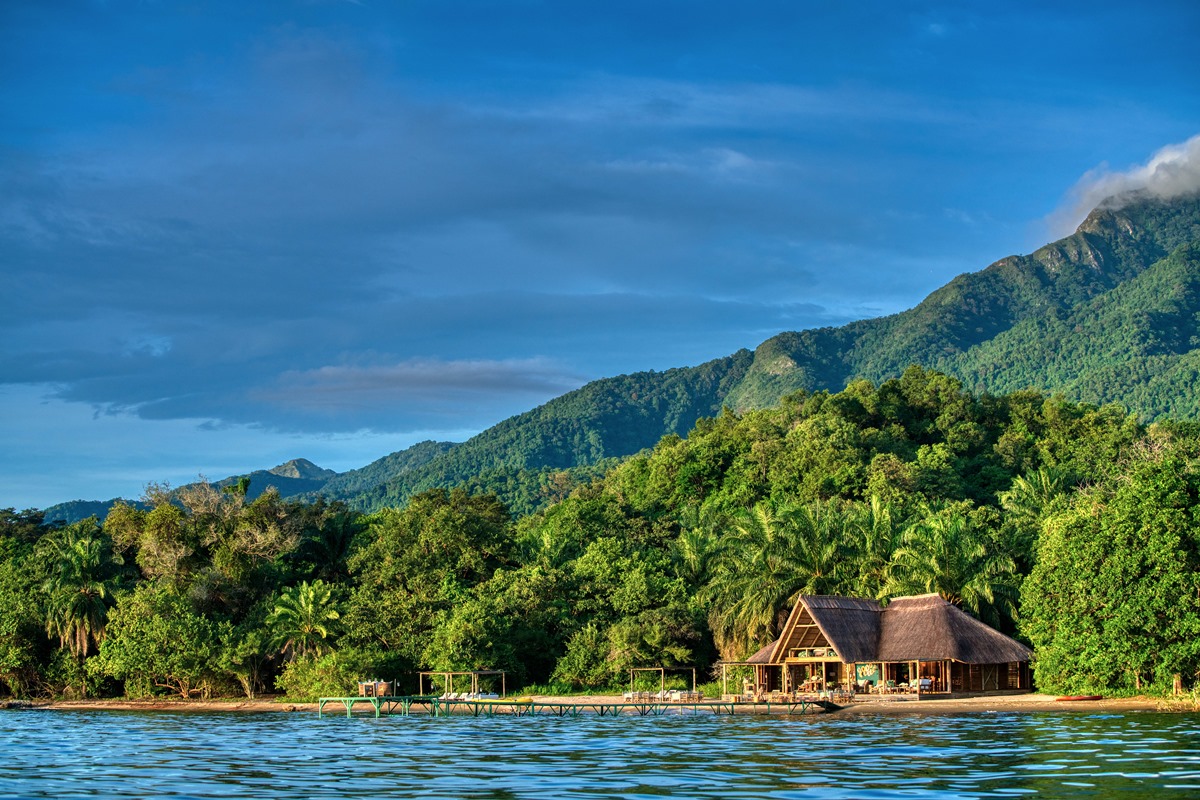
Tanzania’s little-visited parks and reserves are ideal for intrepid safari-goers and those who have already experienced the more familiar destinations in Northern Tanzania. From savannahs and swamps to rainforests and lakes, Tanzania’s undiscovered safari spots offer incredible wildlife encounters far away from the crowds. Plus you can enjoy activities like fishing, walking and boating safaris, and off-roading and night drives – activities not permitted in national parks like the Serengeti.
- Discover Ruaha National Park, Tanzania’s best-kept secret and home to the country’s biggest elephant population.
- Visit Nyerere National Park (Selous Game Reserve), one of Africa’s most important sanctuaries for endangered wild dog.
- Journey to Mahale Mountains or Rubondo Island for one of Tanzania’s most unique safari experiences: chimpanzee trekking.
4. End Your Safari on a Tropical Island
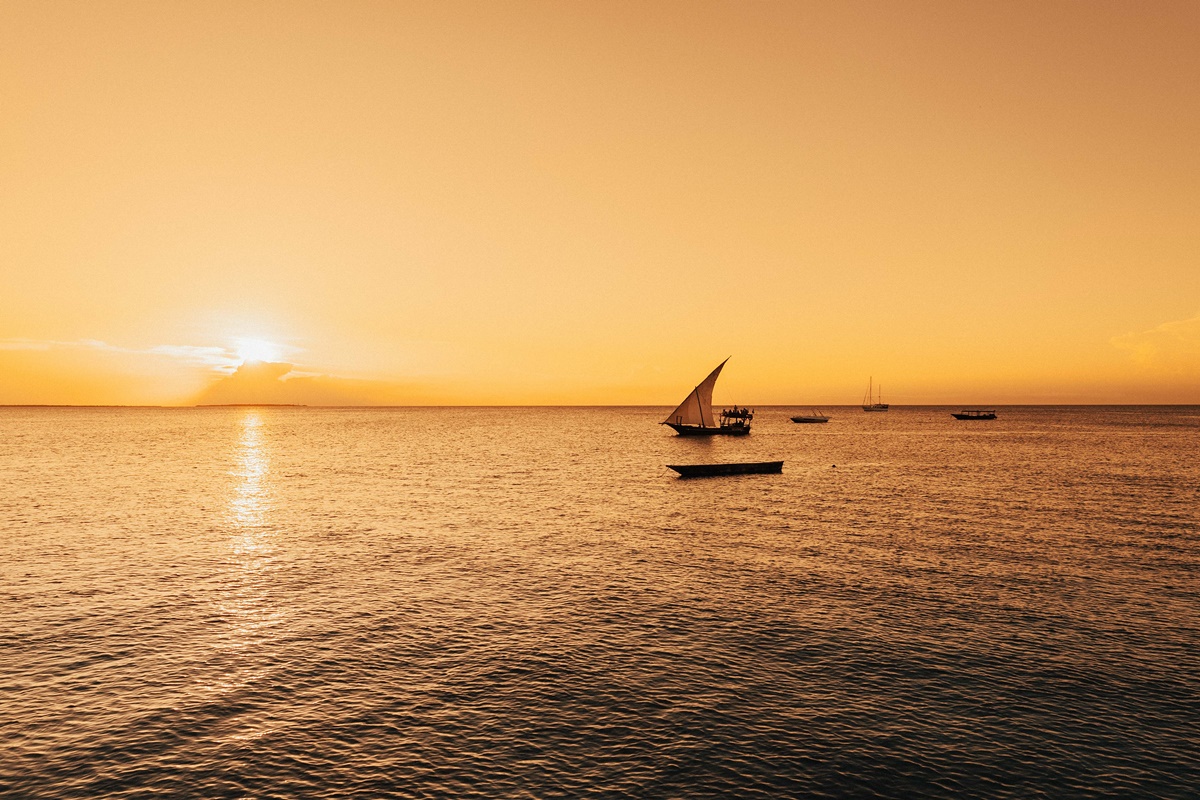
Many Tanzania safaris end with a relaxing stay on a palm-fringed beach lapped by the Indian Ocean’s warm azure waters. Days on safari can be long and dusty, and a sun-kissed tropical island is the ideal place to reflect on your incredible experience before heading back to everyday life. You can easily fly from a Tanzania safari camp after breakfast and be on a powder-soft beach in time for sunset cocktails.
- Zanzibar – one of the world’s most romantic honeymoon destinations.
- Mnemba Island – a private island holiday paradise.
- Pemba Island – among the world’s best diving sites.
- Mafia Island – swim with migrating whale sharks (about October to April).
5. Climb Africa’s Highest Mountain
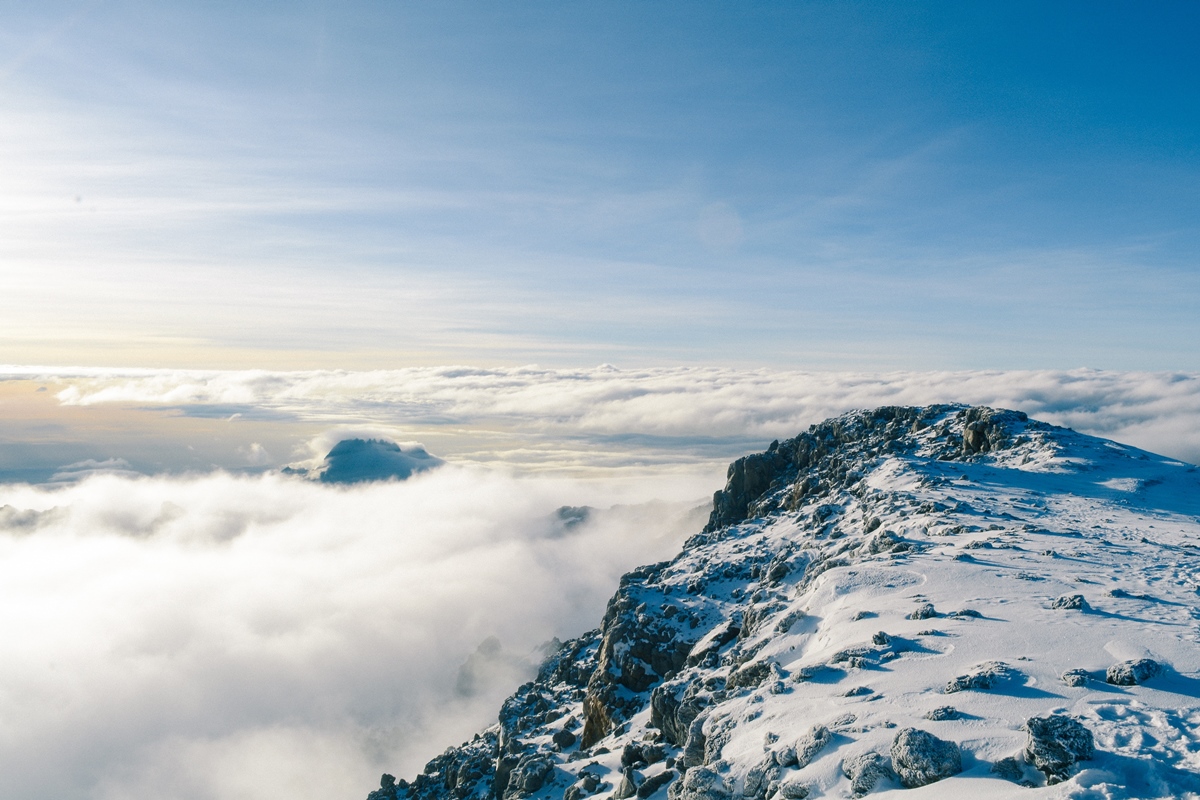
Mount Kilimanjaro is not only the tallest mountain in Africa, it’s also the highest free-standing mountain on Earth. Rising almost 6 kilometres (4 miles) above Tanzania’s plains, climbing to the ‘Roof of Africa’ can take five or more days to complete. There are many routes to the top with varying levels of difficulty, climbing time, crowdedness and natural beauty. Chat with one of our Experts about planning a Kilimanjaro hike, based on your wishes and abilities. We can also easily combine your Kili experience with a Tanzania safari in nearby parks and reserves.
What travellers most enjoyed about Tanzania
SCENERY
BEACHES
WILDLIFE AND SAFARI
WILDEBEEST MIGRATION
PRIVATE CONCESSIONS AND CONSERVANCIES
HOT AIR BALLOONING
MOBILE CAMPING
CULTURAL INTERACTIONS
Where to Go in Tanzania

Tanzania is a vibrant and beautiful country with exceptional parks and reserves. It’s blessed with the winning combination of unparalleled game viewing and dazzling tropical beaches. Because Tanzania is so vast (almost 1.5 times the size of Texas), it helps to divide the country’s major holiday destinations into four areas:
- Northern Safari Circuit – the most popular Tanzania safari route comprising the Serengeti, Ngorongoro, Lake Manyara, Tarangire and Kilimanjaro.
- Tanzania Coast and Islands – the country’s beaches, especially those on islands like Zanzibar, are breath-taking and very accessible.
- Southern Tanzania – includes the wonderfully wild and underrated Nyerere and Ruaha, Tanzania’s best-kept safari secrets.
- Western Tanzania – head to the far-flung corners of Katavi and Mahale for the ultimate off-the-beaten-path Tanzania safari experiences.
Serengeti National Park: A Safari Superstar
Synonymous with safari, the Serengeti is where to go in Tanzania for game viewing at its most dramatic. Hosting the lion’s share of the Wildebeest Migration (about January to September), the Serengeti’s sheer size, accessibility, top-quality lodges and camps, and year-round abundance of wildlife make it one of the best safari destinations in Africa.
Traverse The Endless Plains
Ngorongoro Crater: Haven for the Big 5
Take about 30 000 animals and place them inside the crater of an extinct volcano. Add wetlands, forest, grasslands and some out-of-this-world cliff-top accommodation, and the result is the Ngorongoro Crater. This superb Tanzania safari destination offers excellent game viewing in an unbelievably unique setting. It’s renowned for delivering the easiest and most reliable Big 5 sightings in East Africa.
Descend Into The Crater
Tarangire National Park: An Elephant Empire
Close to Lake Manyara and the Ngorongoro Crater, Tarangire is worth much more than the usual day visit. During the June to October dry season, animal – especially elephant – concentrations along the Tarangire River are among the highest in the country. The park’s bird count of more than 500 species will keep twitchers happy, while its full range of large predators complete the appeal. Tarangire is a beautifully diverse wilderness featuring riverine forest, huge swamps and open woodlands that include Africa’s iconic baobab trees.
Discover A Land Of Giants
Lake Manyara National Park: Home to Tree-climbing Lions
Part of Tanzania’s famed Northern Safari Circuit, Lake Manyara offers easy game viewing in a beautiful setting. The park is home to a good range of heavyweight species, including buffalo, hippo, giraffe, elephant, leopard, and its famous tree-climbing lions. Lake Manyara is an exceptional bird-watching destination. You’ll often see flocks of pelicans and flamingos in the middle of the lake, and the floodplains, woodlands and evergreen forests are equally vibrant.
Get To Know Manyara
Zanzibar and Tanzania Islands: Indian Ocean Bliss
Crown your East Africa safari experience with a stay on Tanzania’s Spice Island: Zanzibar. Perfect for both families and honeymooners, it’s where to go in Tanzania for glorious beaches and coral reefs, dhow (traditional boat) trips at sunset, and exploring fragrant back-street markets. Tanzania’s other Indian Ocean islands won’t disappoint either. Pemba, Mafia and Chole are superlative beach holiday destinations with superb diving, exclusive boutique accommodation and all the indulgent pampering you could wish for.
Find Your Island
Ruaha National Park: A Hidden Gem
Ruaha’s wild and unbridled character is what sets it apart from other safari destinations. This hidden gem is Tanzania’s biggest national park and there are only a handful of safari camps despite its size. You won’t see other tourists around – only a plethora of animals like buffalo, giraffe, kudu, sable, roan, lion, cheetah and leopard. It’s home to Tanzania’s biggest elephant population and a stronghold for rare African wild dogs.
Discover A Best-Kept Secret
Selous Game Reserve: A Wild Dog Sanctuary
Selous (pronounced ‘suh-loo’) is Africa’s largest game reserve – bigger than Switzerland. Its lifeblood, the colossal Rufiji River, forms an intricate network of channels, swamps and lakes from which one of East Africa’s most magnificent ecosystems is born. Buffalo, hippo, crocodile and lion thrive here, while the reserve is also one of Africa’s most important sanctuaries for endangered wild dog. Don’t miss a boat safari, guided walk or fly-camping excursion is this breathtaking wilderness.
Step Into The Wild
Lake Tanganyika: Rainforests and Chimpanzees
The world’s longest freshwater lake is hemmed in by the mountainous walls of the Great Rift Valley. It’s one of our planet’s most biologically rich habitats, not least due to the lakeside presence of the Mahale Mountains and Gombe Stream National Parks. These two far-flung destinations are worth the effort it takes to get to them, as both deliver some of Tanzania’s most unique safari experiences: tropical rainforest wildlife viewing and remarkable chimpanzee trekking.
Go Off The Beaten Path
Mount Kilimanjaro: Africa’s Tallest Peak
Whether you’re content with standing in its mighty shadow or yearn to climb to its icy summit, the iconic Mount Kilimanjaro won’t fail to stir your soul. At 5 895 metres (19 340 feet), it’s Africa’s highest mountain and the tallest free-standing mountain on Earth. But its snow-capped peaks are far more accessible than you may think. If you climb Kili in the dry season between July and October or January and March, no technical climbing is required. But organising and executing a hike to the summit does call for a fair amount of logistical planning. Talk to us about a Kili expedition.
Summit The Roof Of Africa
Arusha: A Gateway to Safari
The undisputed safari capital of Tanzania, the city of Arusha is on the itinerary of virtually anyone visiting the Serengeti, Ngorongoro Crater and Lake Manyara, as logistics often dictate an overnight layover in or around the city. Set in the shadow of Mount Meru, Arusha has its own international airport (Kilimanjaro International Airport) as well as the smaller Arusha Airport for charter flights to final destinations. If you spend some time in Arusha, you’ll have many opportunities to buy souvenirs, take in the cultural activities and visit local places of interest.
See A Safari Capital
Dar es Salaam: Access to the Islands
Most visitors to Dar es Salaam are on their way to Zanzibar or the Indian Ocean coast, but this thriving city provides easy access to Tanzania’s lesser-known reserves such as Selous. High-quality accommodation is available if you need to overnight.
Discover Dar
Best Time to Go to Tanzania
Most safari areas in Tanzania enjoy warm days and cool evenings year-round. While temperatures drop to below freezing on Mount Kilimanjaro and Mount Meru, the country’s Indian Ocean coast and lakeside regions are hot and humid.
Tanzania has two distinct rainy seasons:
- April to May (the ‘long rains’)
- November to December (the ‘short rains’)
Generally, the country’s main rainy season (the long rains) produces tropical downpours in the afternoons and many safari camps close. The short rains season sees the occasional brief shower, but safari camps stay open and game viewing is good.
Go to the ‘Climate’ section on our Travel Advice page for more information about Tanzania’s seasons.
Tanzania Safari High vs Low Season
| High or Peak Season | Low or Green Season | ||
|---|---|---|---|
| About June to October (long dry season) | About January to March and November to December | ||
| Highest rates | Lowest rates | ||
| Need to book well in advance | No need to book too far in advance | ||
| Cool and dry weather | Hot and occasionally wet weather | ||
| Not many baby animals around | Lots of baby animals around | ||
| Not many migrant birds to see | Fantastic time for bird-watching | ||
| Most crowded | Least crowded | ||
| Good photography conditions | Greenest, most scenic landscapes with the best light of the year for photography |
The best time to go on a Tanzania safari depends entirely on what you want to see and experience:
- The major national parks like the Serengeti, Ngorongoro Crater, Lake Manyara and Tarangire deliver superb year-round game viewing, but visitor numbers peak from about June to October.
- Mount Kilimanjaro: the best weather conditions in which to climb are between July and October or January to March.
- If it’s a tropical beach holiday that you’re after, the best time to visit Tanzania’s coast, Zanzibar and other islands is between June and March. If you want to take your chances during the long rains (April to May), you could have a week of sunshine or a week of rain – but you’ll get low season rates.
When to See the Wildebeest Migration in the Serengeti
| Event | Approximate Time | ||
|---|---|---|---|
| Calving or Birthing Season | January to March | ||
| Intense Big Cat Action | January to March | ||
| Rutting (a period of sexual excitement, reproductive activity and mating battles between males) | January to March | ||
| Grumeti River Crossings | May to July | ||
| Mara River Crossings | July to September |
Note: the above are approximate dates only. The Wildebeest Migration is a year-round, circular journey and the river crossings cannot be predicted, although they generally occur between May and September. Sometimes the herds stay put for two weeks, other times they could cross four times in one day!
Tanzania Safari Travel Advice
At Go2Africa, we live and breathe providing our clients with unbiased advice and extraordinary safari experiences. Our Africa Safari Experts are permanently based in Africa, are well travelled, and have extensive first-hand knowledge of the destinations they recommend. They regularly inspect new lodges, experiences and activities to ensure these offerings meet our clients’ expectations.
There’s nothing like up-to-date, relevant travel information direct from someone who’s been there.
Tips for Planning Your Tanzania Safari
- Plan your timing carefully: if you want to see the Wildebeest Migration on your safari or enjoy the best beach weather in Zanzibar, make sure your itinerary matches your travel wishes.
- Book early for high season: Tanzania’s sought-after safari destinations and well-located camps at Wildebeest Migration hotspots get booked out early, often a year in advance.
- Choose your activities: morning and afternoon game drives are standard safari activities, but excursions like night game drives, guided bush walks and hot-air balloon safaris are only allowed in certain areas or camps.
- Expect other visitors in high season: Tanzania’s heavyweight national parks like the Serengeti, Ngorongoro Crater, Lake Manyara and Tarangire can attract a lot of visitors from about June to October. Consider visiting during low or Green Season (about November to March) if you want to escape the crowds and still enjoy great game viewing.
- Go private: if it’s exclusivity you want, then head for one of Tanzania’s private reserves. The accommodation is superb, game viewing is as good as the main parks, and extra safari activities (see number 3) are occasionally offered.
Money and Spending
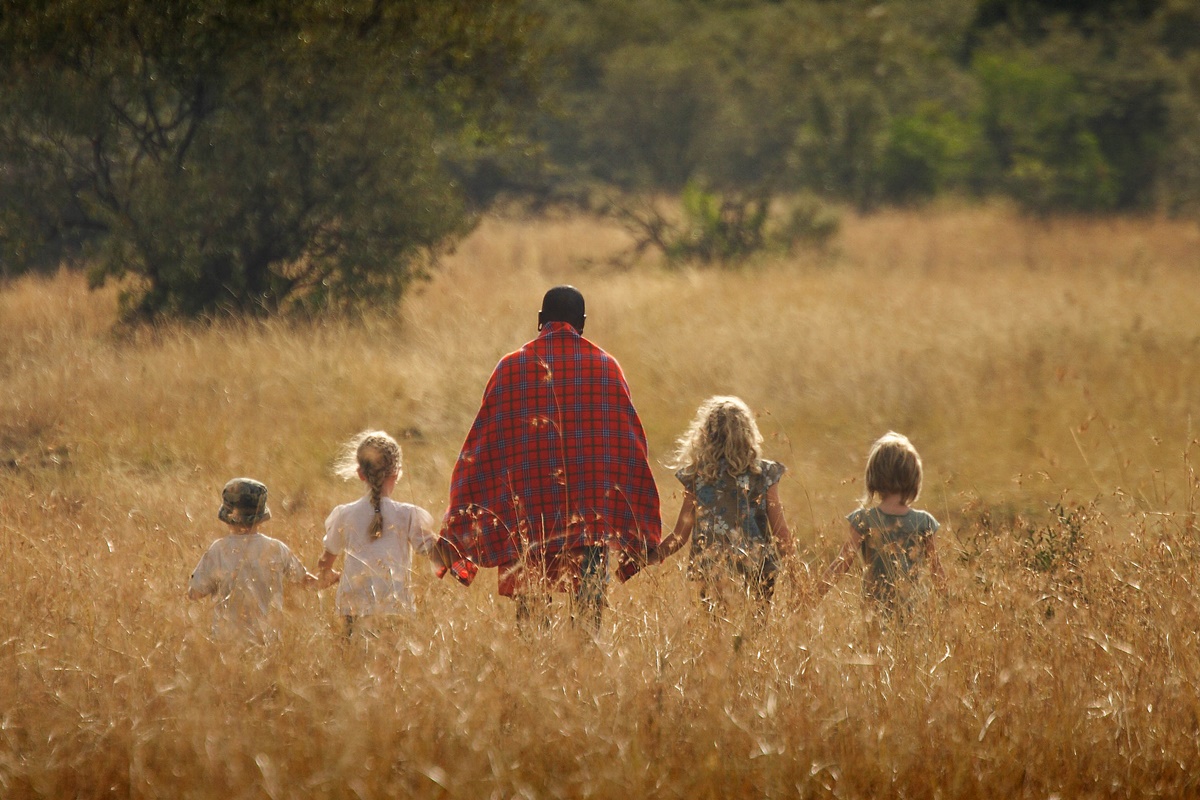
Tanzania’s unit of currency is the Tanzanian Shilling, but our advice is to use US Dollars only – and in cash: credit cards and traveller’s cheques (although accepted in most establishments) incur transaction fees. ATMs are found throughout the major towns and cities in Tanzania, but not in the national parks and game reserves.
Note: US Dollar bills printed before 2006 are not accepted in Tanzania.
Tipping lodge staff and drivers/guides is customary for good service on a Tanzania safari, but check first to see whether a service charge has been added to your bill. Tipping is always in addition to the price quoted by your operator and the amount varies depending on the size of your group, the level of luxury of the safari and whether you thought an exceptionally good job was done. When travelling in the major Tanzania cities, a 10% tip is customary in restaurants and bars when a service charge is not included.
Read our blog for in-depth tipping guidelines or get in touch with one of our Africa Safari Experts for advice.
Climate
Tanzania’s Seasons:
| Long Rains | Short Rains | Long Dry | Short Dry | ||||||
|---|---|---|---|---|---|---|---|---|---|
| Months | April to May | November to December | June to October | January to March | |||||
| Average Temperatures | 72–81°F 22–27°C | 81–86°F 27–30°C | 70–81°F 21–27°C | 84°F 29°C |
What to Pack

When packing for your Tanzania safari, light casual clothing in practical, neutral colours and a warm jacket for evening game drives are a safe bet throughout the year. For more on what to pack for a safari, refer to our Africa Safari Guide.
When visiting Zanzibar, it’s important for women to dress modestly in main towns out of respect for Muslim cultural beliefs. T-shirts that cover the shoulders, long skirts and capri pants are generally better options than tank tops and shorts. Beach wear and bathing costumes are acceptable on the beaches and in resorts.
Etiquette

Religious belief is strong in Tanzania, with Christianity and Islam dominating. Most Muslims live on the coast and in Zanzibar; visitors should be aware of the conservative nature of these destinations – especially Stone Town – and dress and behave accordingly.
Tanzanians are renowned for being friendly and harmonious people, however, it is courteous to ask permission before photographing people.
Flights and Getting Around
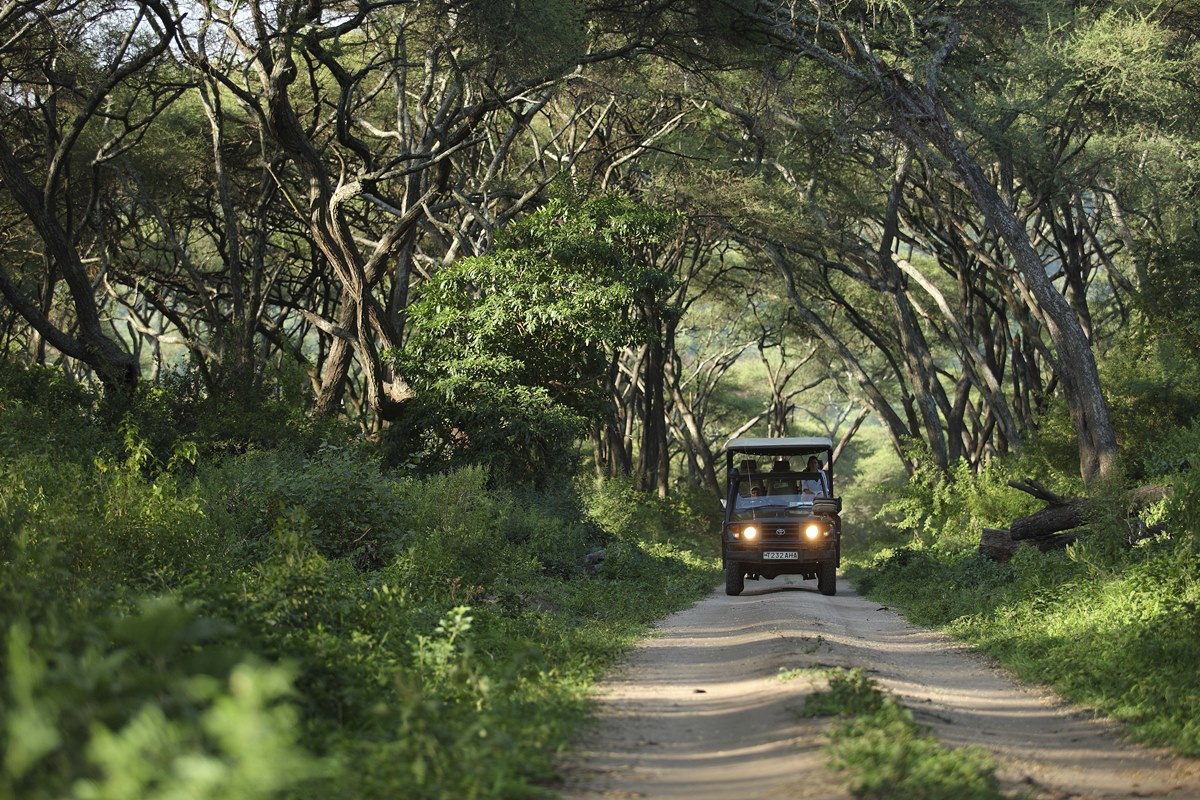
Main International Airports
Kilimanjaro International Airport – Tanzania’s second international airport – serves the Serengeti, Ngorongoro Crater, Tarangire and Lake Manyara. However, you need to transfer to nearby Arusha Airport for charter flights to these safari destinations. International flights often arrive at Kilimanjaro Airport late in the day, so an overnight stay in Arusha is usually necessary.
Dar-es-Salaam International Airport – Tanzania’s main airport – is the gateway to the Indian Ocean coast and Zanzibar, as well as Selous Game Reserve and Ruaha National Park.
Regional Airports
Arusha Airport – the gateway to northern Tanzania’s safari airstrips – is located about 30 kilometres (19 miles) from Kilimanjaro International Airport.
Did you know you can book your flights through Go2Africa? For more information and frequently asked questions, please see our Flights page.
Safari Vehicles
Guided road transfers and game drives in Tanzania are conducted in closed 4x4s with big windows and pop-up roofs, although visitors to destinations like Mahale will enjoy a boat transfer across Lake Tanganyika. Most safari destinations in Tanzania have extensive road networks and closed vehicles are therefore the norm when doing long-distance road transfers between airstrips, camps and lodges. A closed 4×4 game drive vehicle generally has three rows of seating and features a pop-up roof hatch that can be raised for game viewing and taking photographs.
Visa and Passport Requirements
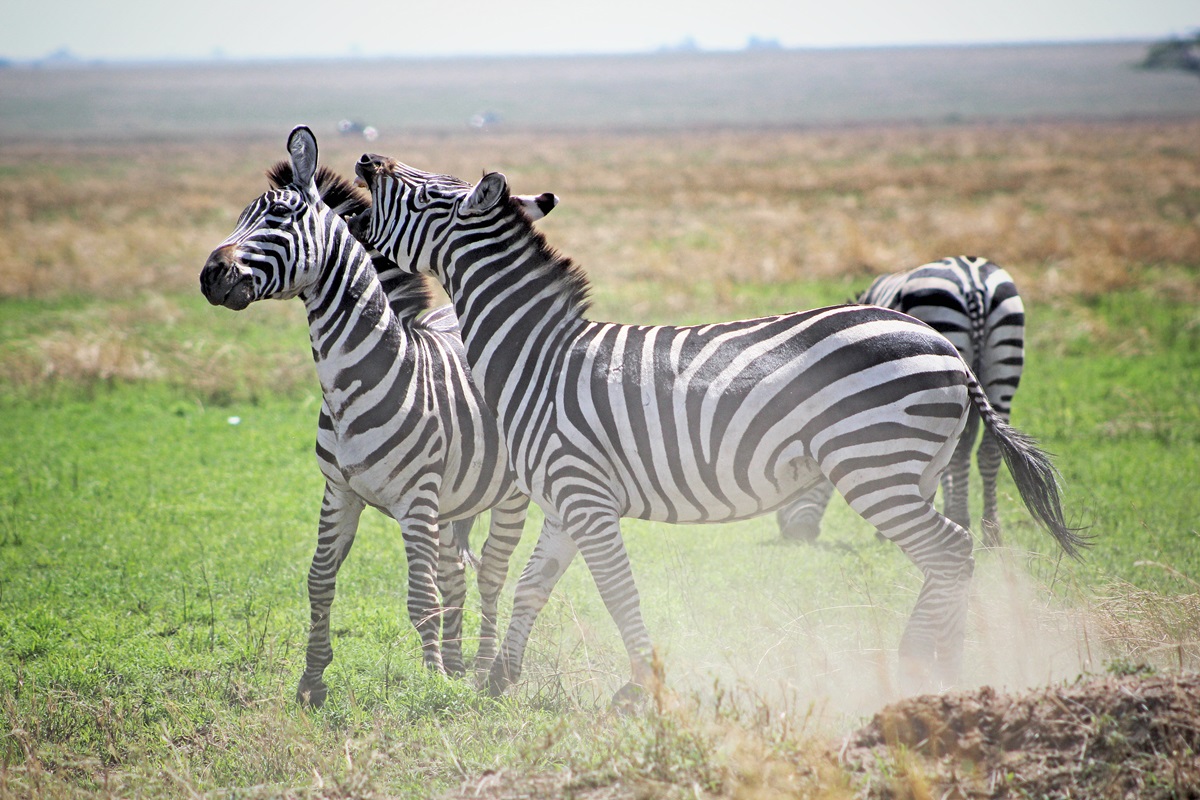
Almost all visitors to Tanzania require a visa. You must contact the relevant issuing authorities in good time (ideally, several months in advance) to ascertain the entry requirements to Tanzania, and to arrange the necessary permits and visas. We strongly encourage all clients entering Tanzania via Kilimanjaro International Airport to obtain their visas online at Tanzania Immigration Department before arriving in Tanzania. E-visas can take 2 to 3 weeks to be issued.
Visitors to Tanzania must possess a passport that is valid for six months after the initial date of travel.
More About Tanzania
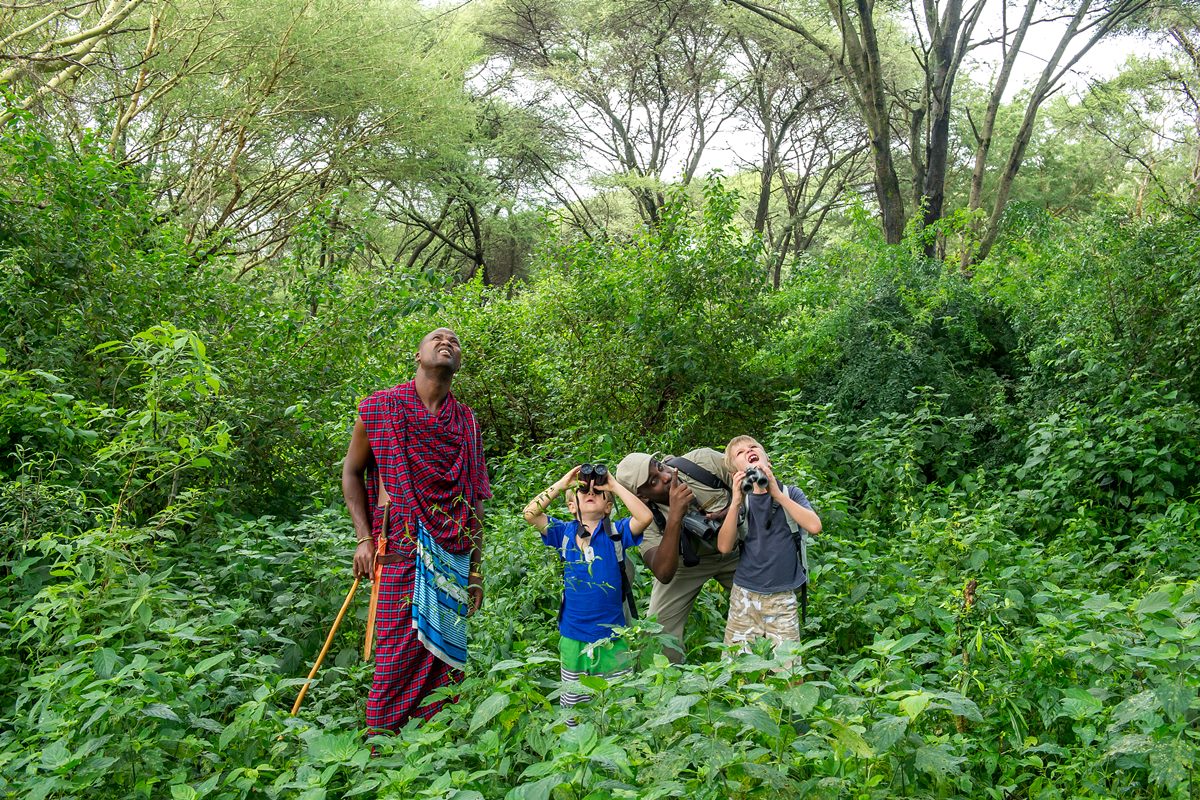
History and Economy
In many ways, Tanzanian history is the history of humankind. Fossils found at Olduvai Gorge, one of the world’s premier archaeological sites, suggest that Tanzania has been settled by hominids for over 2 million years. Iron Age migrations from West Africa were followed by European and Arabian merchants, missionaries and slavers, and by the mid-1800s Zanzibar had become the centre of the East African slave trade. Colonised first by the Germans and then the British, independence came peacefully to mainland Tanganyika in 1961. The addition of Zanzibar in 1964 created the modern state of Tanzania.
Rich in mineral wealth and natural gas, Tanzania’s economy is nevertheless dominated by agriculture, which employs 75% of the workforce and accounts for half the country’s GDP. Tanzania’s main exports include gold, coffee, tea and cotton. But it’s tourism, increasing in importance year after year, that is the country’s biggest foreign exchange earner.
People and Culture
Some of Tanzania’s 120 ethnic groups make up the African population, with a significant numbers of Asians, Arabs and Europeans too. Even with this mix of identities, Tanzania has long promoted a harmonious national culture, one that is based on a subtle but strong social code of courtesy and respect. English and Swahili are the official languages.
Landscape and Wildlife
Lying between the two arms of the Great Rift Valley, Tanzania’s huge central plateau is bounded on the west by Africa’s great lakes, the north by mountains (including Kilimanjaro, Africa’s highest peak) and the Indian Ocean in the east. Most of the country is covered in grassland, open woodland and savannah, but significant pockets of rainforest exist in remote mountain ranges.
Home to 20% of Africa’s large mammals, Tanzania is one of the continent’s premier game viewing destinations. More than 25% of the country is given over to conservation and several Tanzania animal reserves rank among the biggest in the world. Most visitors head for northern Tanzania, where the most famous and accessible animal reserves are. But it’s in south and central Tanzania where you’ll find huge, virtually unvisited savannah and rainforest reserves that deliver genuine off-the-beaten-track safaris.
Best Tanzania Tours and Safaris
Our tried-and-tested Tanzania itineraries deliver once-in-a-lifetime experiences. Naturally, most of our Tanzania tours and safaris focus on the country’s fantastic parks and reserves like the Serengeti and Ngorongoro Crater. But we also have a great selection of tours to Tanzania’s lesser known yet underrated reserves like Selous and Ruaha. Plus, the exotic Zanzibar and other Indian Ocean islands offer fabulous beach resorts. We recommend getting the best of both: combining a Tanzania safari and a tropical beach getaway – it’s straightforward and easy to arrange.
A Safari for Every Type of Traveller
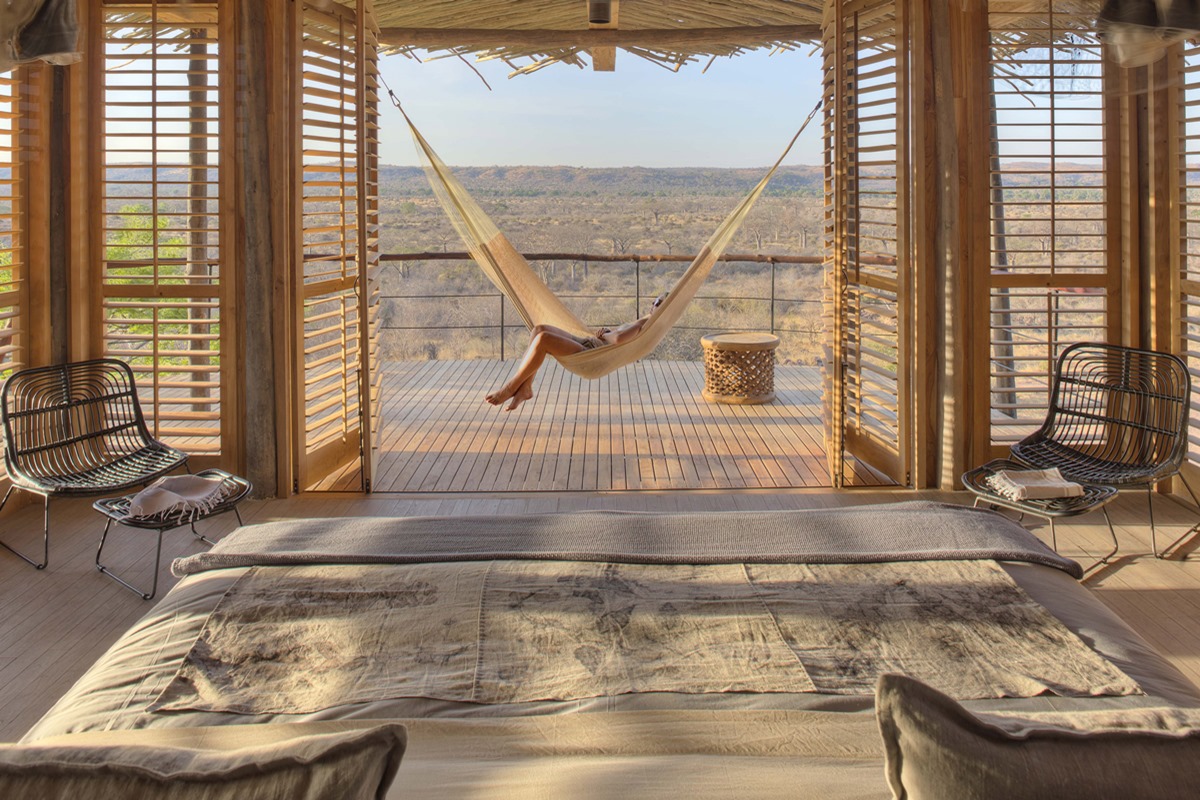
Tanzania offers a wide range of safaris for both first timers and seasoned campaigners. The ease with which a child-friendly safari can be combined with a beach holiday makes Tanzania a shoo-in for families, while the country’s most exclusive and luxurious safari lodges and beach retreats make for an unforgettable honeymoon in Africa. More and more lodges now offer vegetarian and vegan meals to accommodate those with special dietary requirements. And many camps are diversifying their ranges of safari activities.
- Top choice for family safaris and beach breaks in East Africa.
- Authentic lodges and camps beam with exceptional service and panache of safari’s bygone era.
- Exclusive and intimate spots offer romantic honeymoon options.
Browse our recommended Tanzania safari itineraries below or simply get in touch with one of our Africa Safari Experts to help tailor-make a Tanzania itinerary that matches your travel wishes and budget:
Recommended Tanzania Tours & Safari Holidays

Secret Serengeti, Ruaha & Selous
From $7,725 per person sharing
Destinations visited:
- Ruaha
- Selous
- Serengeti

Secret Gorillas, Chimps, Serengeti & Crater
Destinations visited:
- Bwindi National Park
- Entebbe
- Kigali
- Ngorongoro Crater
- Rwanda
- Serengeti
- Tanzania
- Uganda

Good-Value Migration, Crater & Zanzibar
From $6,790 per person sharing
Destinations visited:
- Arusha
- Ngorongoro Crater
- Serengeti
- Tanzania
- Zanzibar

Tanzania’s Tarangire, Highlands & Serengeti East
From $8,245 per person sharing
Destinations visited:
- Ngorongoro Crater
- Serengeti
- Tanzania
- Tarangire

Tanzania’s Migration, Karatu & Tarangire
From $6,070 per person sharing
Destinations visited:
- Arusha
- Ngorongoro Crater
- Serengeti
- Tanzania
- Tarangire

Best-Price Tanzania Migration, Manyara & Karatu (Private Fly/Drive)
From $3,865 per person sharing
Destinations visited:
- Lake Manyara
- Ngorongoro Crater
- Serengeti
- Tanzania
- Tarangire

5-day Best-Priced Tanzania Safari (Group Scheduled 4×4)
From $1,945 per person sharing
Destinations visited:
- Ngorongoro Crater
- Serengeti
- Tanzania
- Tarangire

Luxury Kilimanjaro Machame Climb
From $5,890 per person sharing
Destinations visited:
- Arusha
- Kilimanjaro
- Tanzania

Romantic Tanzania’s Selous & Pemba Island
From $5,520 per person sharing
Destinations visited:
- Pemba Island
- Selous
- Tanzania
- Zanzibar

Western Tanzania Fly-In Katavi & Mahale
From $7,545 per person sharing
Destinations visited:
- Tanzania

Ultra-Luxury Tanzania & Private Island
From $13,300 per person sharing
Destinations visited:
- Lake Manyara
- Ngorongoro Crater
- Serengeti
- Tanzania
- Zanzibar

East Africa’s Migration, Safari & Highlands
From $8,550 per person sharing
Destinations visited:
- Amboseli National Park
- Kenya
- Masai Mara
- Ngorongoro Crater
- Serengeti
- Tanzania
- Tarangire
Best Accommodation in Tanzania
Home to the Serengeti National Park, Ngorongoro Crater and a host of other superb parks and reserves, Tanzania is one of Africa’s classic safari destinations. And its accommodation options reflect this: luxury safari lodges, remote tented camps and popular safari hotels make up most of our recommendations.
Our selection of Tanzania accommodation showcases both luxury lodges and more affordable safari camps, ensuring that everyone gets a taste of this fascinating and diverse country. Tanzania also has some of East Africa’s most exceptional and indulgent accommodation – think private safari villas set in the most incredible wilderness locations.
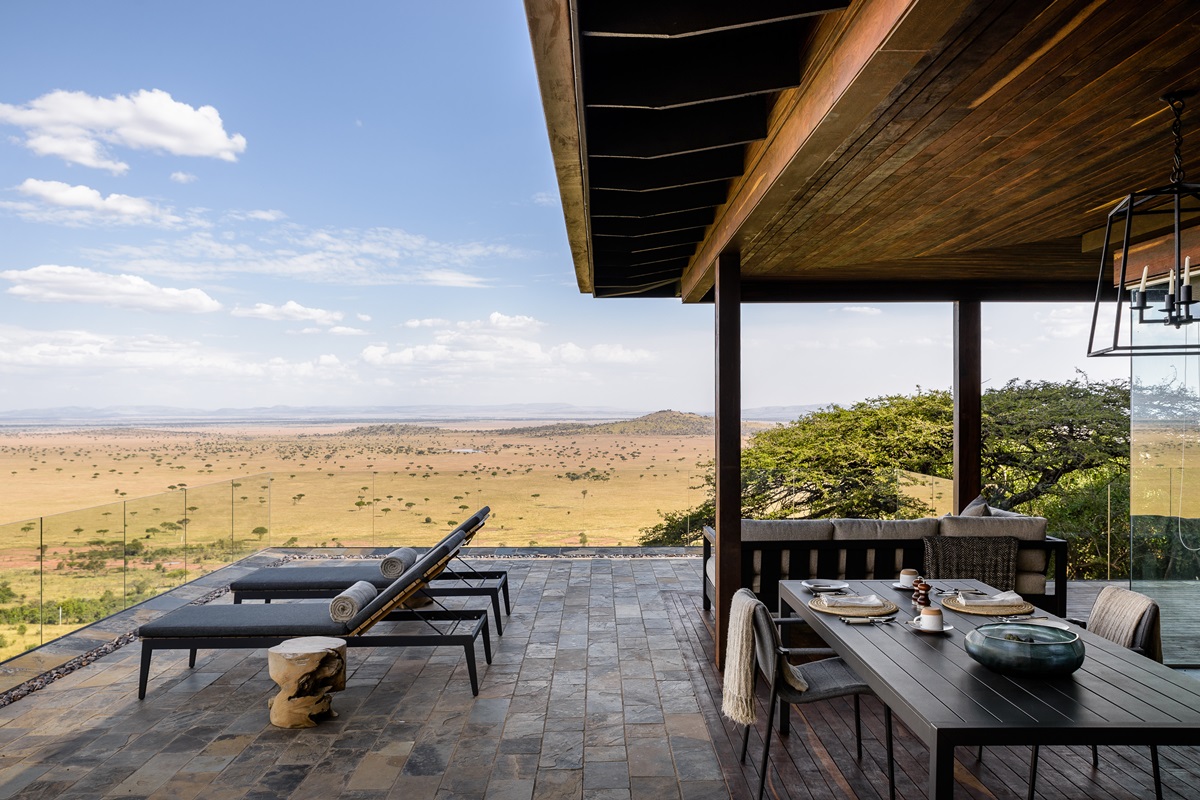
Our Selection of Top Accommodation in Tanzania Includes:
- Mobile camps that follow the Wildebeest Migration’s movements.
- Properties perfect for families or groups travelling together.
- Superb luxury lodges that are tucked away for the most romantic safari honeymoon.
- Breath-taking beach lodges on tropical islands.
Browse our favourite Tanzania accommodations below or simply get in touch with one of our Africa Safari Experts to help you find the one that’s right for you:
Recommended Tanzania Accommodation

Greystoke Mahale
From $760 per person sharing
Activities travellers enjoyed:
- Animal tracking experience
- Beach activities
- Bird watching
- Chimp tracking
- Game drives
- Hiking

Sanctuary Swala Camp
From $550 per person sharing
Activities travellers enjoyed:
- Bird watching
- Bush dining
- Game drives
- Local village visits
- Night drives
- Picnics

Gibb’s Farm
From $395 per person sharing
Activities travellers enjoyed:
- Biking
- Cultural tours
- Game drives
- Guided walks
- Jogging trails
- Local village visits

Chada Katavi
From $760 per person sharing
Activities travellers enjoyed:
- Bird watching
- Bush dining
- Game drives
- Specialist guides
- Star gazing
- Guided walking safaris

Lake Manyara Tree Lodge
From $840 per person sharing
Activities travellers enjoyed:
- Game drives
- Local village visits
- Night drives
- Private game-drives
- Specialist guides
- Bird watching

Kwihala Camp
From $470 per person sharing
Activities travellers enjoyed:
- Bird watching
- Bush dining
- Game drives
- Guided walks
- Night drives
- Guided walking safaris

Ubuntu Migration Camp
From $430 per person sharing
Activities travellers enjoyed:
- Game drives
- Bush dining
- Hot air ballooning
- Local village visits
- 4×4 Drives
- Bird watching

Baraza Resort and Spa
From $450 per person sharing
Activities travellers enjoyed:
- Beach activities
- Boat excursions
- Cultural tours
- Day tours
- Historical tours
- Sailing

Roho ya Selous
From $755 per person sharing
Activities travellers enjoyed:
- Fishing
- Game drives
- Guided walking safaris
- 4×4 Drives
- Bird watching
- Boat-based safaris

Rubondo Island Camp
From $600 per person sharing
Activities travellers enjoyed:
- Bird watching
- Boat excursions
- Fishing
- Game drives
- Hiking
- 4×4 Drives

The Highlands Ngorongoro
From $445 per person sharing
Activities travellers enjoyed:
- Cultural tours
- Game drives
- Hiking
- Guided walking safaris
- 4×4 Drives
- Bird watching

Ngorongoro Crater Lodge
From $1,115 per person sharing
Activities travellers enjoyed:
- Bird watching
- Game drives
- Local village visits
- Picnics
- Private game-drives
- Scenic drives


